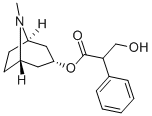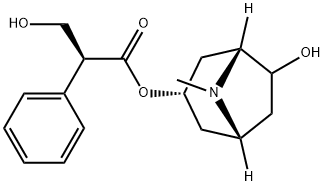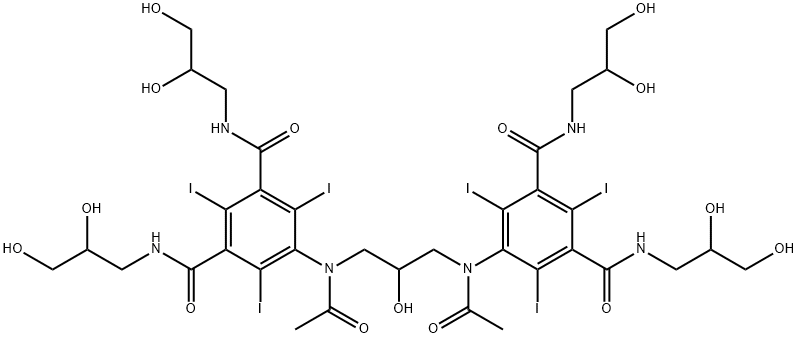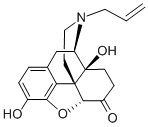PYRIDINE-2-CARBOXALDOXIME METHIODIDE
Synonym(s):2-PAM;2-PAM iodide;Pralidoxime iodide
- CAS NO.:94-63-3
- Empirical Formula: C7H9IN2O
- Molecular Weight: 264.06
- MDL number: MFCD00011982
- EINECS: 202-349-6
- SAFETY DATA SHEET (SDS)
- Update Date: 2024-10-28 16:48:35

What is PYRIDINE-2-CARBOXALDOXIME METHIODIDE?
The Uses of PYRIDINE-2-CARBOXALDOXIME METHIODIDE
Cholinesterase reactivator.
Definition
ChEBI: An organic iodide salt that has pralidoxime as the cation.
Safety Profile
Poison by subcutaneous, intravenous, intramuscular, and intraperitoneal routes. Moderately toxic by ingestion. Used as an antidote to the cholinesterase inhibitors of the parathion group. When heated to decomposition it emits highly toxic fumes of NO, and I-.
Properties of PYRIDINE-2-CARBOXALDOXIME METHIODIDE
| Melting point: | 220 °C (dec.)(lit.) |
| Density | 1.7439 (estimate) |
| storage temp. | 2-8°C |
| solubility | DMSO: 250 mg/mL (946.75 mM) |
| form | Solid |
| color | Light yellow to yellow |
| Sensitive | Light Sensitive |
| Merck | 13,7788 |
| CAS DataBase Reference | 94-63-3(CAS DataBase Reference) |
Safety information for PYRIDINE-2-CARBOXALDOXIME METHIODIDE
| Signal word | Warning |
| Pictogram(s) |
 Exclamation Mark Irritant GHS07 |
| GHS Hazard Statements |
H302:Acute toxicity,oral |
| Precautionary Statement Codes |
P264:Wash hands thoroughly after handling. P264:Wash skin thouroughly after handling. P270:Do not eat, drink or smoke when using this product. P301+P312:IF SWALLOWED: call a POISON CENTER or doctor/physician IF you feel unwell. P501:Dispose of contents/container to..… |
Computed Descriptors for PYRIDINE-2-CARBOXALDOXIME METHIODIDE
PYRIDINE-2-CARBOXALDOXIME METHIODIDE manufacturer
Dishman Carbogen Amcis Ltd (Dishman Group)
1Y
Phone:+91-8154017093
Whatsapp: +91 8154017093
product: 94-63-3 98%
Triveni Interchem Private Limited
1Y
Phone:+91-7574814001
Whatsapp: +91 7574814001
product: Pralidoxime iodide 98%
REXIN Laboratories (Redson Group)
1Y
Phone:+91-8866003844
Whatsapp: +91-8866003844
product: Pralidoxime iodide 94-63-3 98%
New Products
(S)-3-Aminobutanenitrile hydrochloride 4-Methylphenylacetic acid N-Boc-D-alaninol N-BOC-D/L-ALANINOL Tert-butyl bis(2-chloroethyl)carbamate N-octanoyl benzotriazole 3-Morpholino-1-(4-nitrophenyl)-5,6-dihydropyridin- 2(1H)-one Furan-2,5-Dicarboxylic Acid S-2-CHLORO PROPIONIC ACID ETHYL ISOCYANOACETATE 2-Bromo-1,3-Bis(Dimethylamino)Trimethinium Hexafluorophosphate 4-IODO BENZOIC ACID 3-NITRO-2-METHYL ANILINE 1-(2,4-DICHLOROPHENYL) ETHANAMINE (2-Hydroxyphenyl)acetonitrile 4-Bromopyrazole 5,6-Dimethoxyindanone 2-(Cyanocyclohexyl)acetic acid 4-methoxy-3,5-dinitropyridine 1-(4-(aminomethyl)benzyl)urea hydrochloride 2-aminopropyl benzoate hydrochloride diethyl 2-(2-((tertbutoxycarbonyl)amino) ethyl)malonate tert-butyl 4- (ureidomethyl)benzylcarbamate Ethyl-2-chloro((4-methoxyphenyl)hydrazono)acetateRelated products of tetrahydrofuran








You may like
-
 94-63-3 Pralidoxime Iodide 99%View Details
94-63-3 Pralidoxime Iodide 99%View Details
94-63-3 -
 94-63-3 98%View Details
94-63-3 98%View Details
94-63-3 -
 Pralidoxime iodide 98%View Details
Pralidoxime iodide 98%View Details
94-63-3 -
 Pralidoxime iodide 94-63-3 98%View Details
Pralidoxime iodide 94-63-3 98%View Details
94-63-3 -
 PRALIDOXIME IODIDE 95-99%View Details
PRALIDOXIME IODIDE 95-99%View Details
94-63-3 -
 2-Pyridinealdoxime methiodide CAS 94-63-3View Details
2-Pyridinealdoxime methiodide CAS 94-63-3View Details
94-63-3 -
 14714-50-2 (2-Hydroxyphenyl)acetonitrile 98+View Details
14714-50-2 (2-Hydroxyphenyl)acetonitrile 98+View Details
14714-50-2 -
 118753-70-1 98+View Details
118753-70-1 98+View Details
118753-70-1
Statement: All products displayed on this website are only used for non medical purposes such as industrial applications or scientific research, and cannot be used for clinical diagnosis or treatment of humans or animals. They are not medicinal or edible.